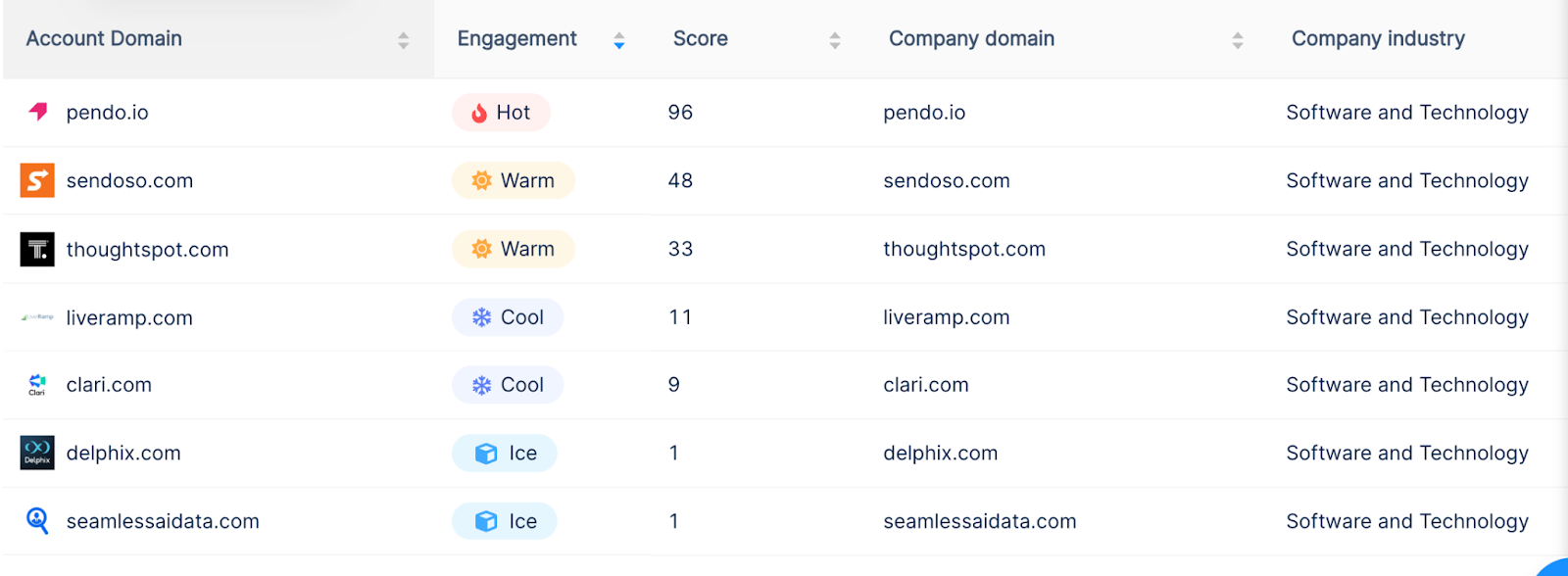🥳 Big news! We've partnered with Clearbit to double-down on our industry-leading marketing intelligence. Read more.
Playbook


On average, only about 4% of B2B website traffic converts. Using LinkedIn to retarget the remaining 98% of website visitors is an effective way to drive more results from existing traffic. That being said, building well-segmented retargeting audiences can be a tedious, time-consuming chore…well, until now.
Here’s a quick guide to build and activate better Linkedin retargeting audiences with Factors.
You may be familiar with the LinkedIn Pixel (or LinkedIn Insight Tag) as the standard approach for LinkedIn retargeting. While the LinkedIn Pixel works to an extent, it poses certain limitations that Factors overcomes to deliver:
And the results? Well, they speak for themselves…

Here’s an in-depth breakdown of why Account-based retargeting with Factors outperforms LinkedIn’s Pixel-based retargeting: Pixel vs Account-based LinkedIn Retargeting.
Follow this 3-step guide to build better LinkedIn retargeting audiences with Factors.
Of course, the first step to better retargeting involves identifying the set of accounts engaging with your brand across your website, ads, and review sites. These accounts will act as the base from which you will segment your audiences.

To begin, install our script onto your website either manually or via Google Tag Manager. Once the script has been verified, Factors will start de-anonymizing incoming traffic including company names, location, industry, and other firmographic details. You may also integrate your LinkedIn ads account and G2 profile within Factors to collect intent signals across these channels:

Once set up, you will soon begin to see otherwise anonymous accounts engaging with your brand in your dashboard:

Of course, not every account engaging with your company will fit your ideal client profile. In the case of the LinkedIn Pixel, you’ll have no choice but to retarget these accounts as well. But with Factors, you may segment audiences based on their firmographics and engagement — and direct ad budgets only towards those accounts that match your fitment criteria.
Accordingly, this second step involves segmenting your audiences based on who you want to retarget. Here are a few examples of segments you can create with Factors:
You may build countless such Segments with simple queries as shown below and create nuanced Segments of audiences for retargeting.


So far, we’ve identified anonymous accounts visiting your website and created Segmented account lists based on the firmographics and account engagement we’re interested in.
This final step involves pushing these audiences for retargeting on LinkedIn. You could either export and upload a csv of these accounts onto LinkedIn but we recommend using Factors to create automated workflows that will regularly enroll accounts that meet your criteria into their respective LinkedIn campaigns for you.
Simply set it and forget it! Here’s how this works using Make.com, but the process is broadly the same across any automation software:
1. First, add the "Webhooks" component. Hit "Add" to generate a new Webhooks URL. Copy this URL into the “webhooks” section within Factors. Then, hit “Test this with a sample payload”. This will inform Make.com about the data structure. The first component is complete.

2. Next, search for and select "Linkedin Matched Audiences" as the next component. Then, authenticate your connection into your LinkedIn account and select your Audience ID. Simply hit “Search”, choose the account, and hit “No” next to the option “Is from Make”. Make.com will then list out all your audiences. Simply select the audience you want to push accounts into.
Note: We won’t be creating an audience in this guide, we’re just pushing accounts into an already existing audience. Accordingly, you’ll need to have already created an audience before this step.

3. Finally, map the information from Factors into the format that Linkedin audience will support: Hit “Add Item” inside the “Companies” section. In the expanded section, click on each of the fields that you want to map. When you click on it, a modal will appear that shows you the information sent from Factors. Select the 'PropValue' field that corresponds to the variable name that you want to map. Repeat this for each of the fields that you want to map, as you push this information into Linkedin Audiences.

And there you have it!
LinkedIn retargeting has proven to be an effective strategy for recapturing potential pipeline from otherwise anonymous traffic. That being said, it’s important to follow a few best practices to ensure optimal performance. Here are three key points to keep in mind:
Related reading: Check out our LinkedIn ads framework for early-stage teams.
Ready to make the most of your go-to-market efforts?
Book a demo & see Factors in action now.
